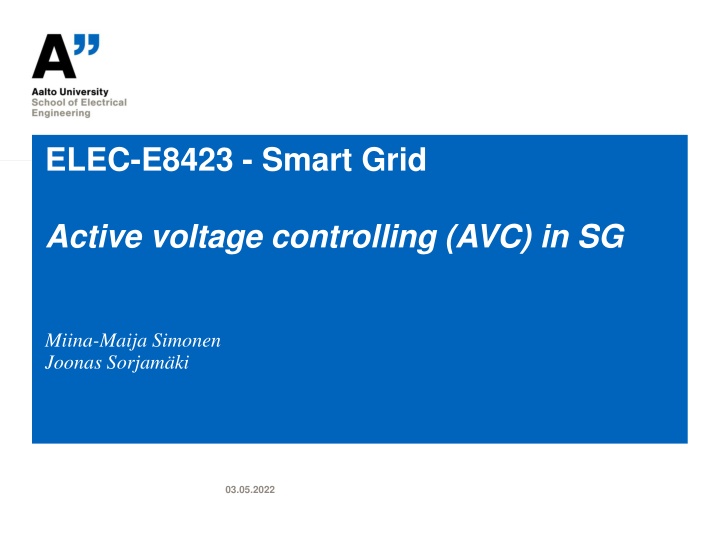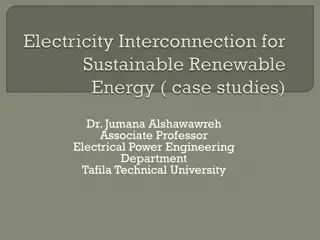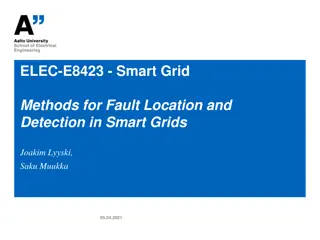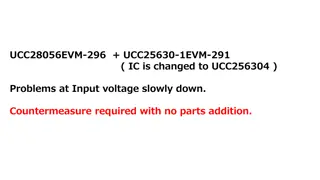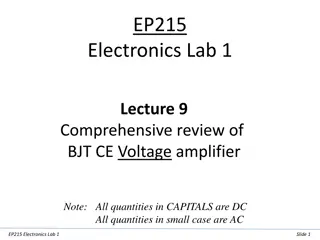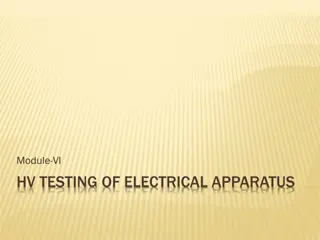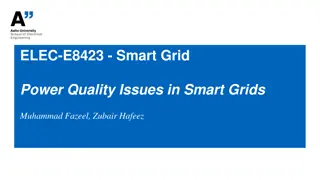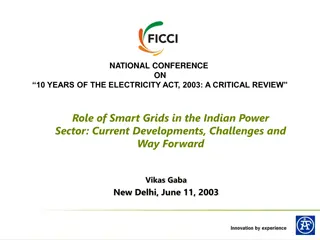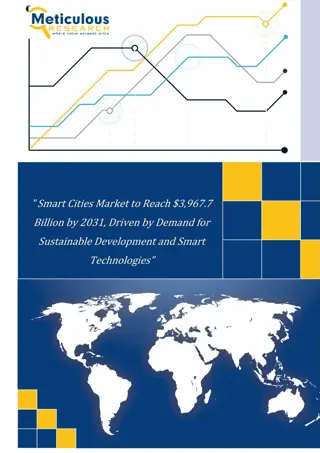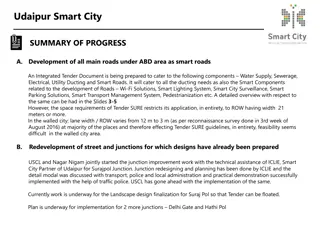Active Voltage Control in Smart Grids
There are standards for voltage quality and drop in the network, limiting distributed generation hosting capacity. Active voltage control methods, such as local and coordinated approaches, offer economic feasibility and increased hosting capacity. Obstacles include changes in operational and planning principles with the adoption of active control.
Download Presentation

Please find below an Image/Link to download the presentation.
The content on the website is provided AS IS for your information and personal use only. It may not be sold, licensed, or shared on other websites without obtaining consent from the author.If you encounter any issues during the download, it is possible that the publisher has removed the file from their server.
You are allowed to download the files provided on this website for personal or commercial use, subject to the condition that they are used lawfully. All files are the property of their respective owners.
The content on the website is provided AS IS for your information and personal use only. It may not be sold, licensed, or shared on other websites without obtaining consent from the author.
E N D
Presentation Transcript
ELEC-E8423 - Smart Grid Active voltage controlling (AVC) in SG Miina-Maija Simonen Joonas Sorjam ki 03.05.2022
Contents Introduction Non-coordinated active voltage control methods Coordinated active voltage control methods Obstacles Conclusions 07.02.2018 Page 2
Introduction There are voltage quality and voltage drop standards for the network These limit the hosting capacity of distributed generation Passive and active voltage control methods Active methods often more economically feasible Either local, coordinated or these two combined Passive methods can be physical grid strengthening 07.02.2018 Page 3
Local active voltage control (LVC) Control based on local measurements No need for information transfer E.g. power factor control based on terminal measurements Can significantly increase DG hosting capacity Might increase losses In worst cases might increase the need of reactive power compensation 07.02.2018 Page 4
Coordinated active voltage control (CVC) (1/2) Control based on the state of the whole network or a large network part CVC increases DG hosting capacity much more than LVC Requires: Data transfer between nodes Measurements done all across the network Algorithms to decide on best control actions Control center 07.02.2018 Page 5
Coordinated active voltage control (CVC) (2/2) There are two types of CVC control methods Methods using control rules Control actions implemented when predetermined conditions are met in a network node Example: Substation voltage is reduced when the maximum voltage is too high Adequate when there are not many control possibilities in a network Methods using optimization An optimization algorithm is used to determine control actions 07.02.2018 Page 6
Obstacles for active voltage control Taking active voltage control into use changes the operational and planning principles of distribution networks substantially In an active network, customer owned resources are used in network management DNO has to trust these capabilities The network planning tools used currently are not capable of taking active voltage control into account. Active voltage control is still somewhat at its development phase Practical implementations have mainly concerned microgrids Algorithms are still under research The current regulative environment, at least in Finland, does not encourage DNOs to take active voltage control into use. Connection of DG incentivized. Making the connection in a cost effective manner is not incentivized. Traditionally, measurement data has been available only from the primary substations 07.02.2018 Page 7
Conclusions AVC can in many cases increase the DG hosting capacity of a network more cheaply than conventional methods AVC is not widely used yet because of its novelty and problems Requires change in grid operation and planning principles 07.02.2018 Page 8
Source material used Kulmala, A. 2014. Active Voltage Control in Distribution Networks Including Distributed Energy Resources. Technical university of Tampere. Kulmala, K. M ki, S. Repo and P. J rventausta, "Active voltage level management of distribution networks with distributed generation using on load tap changing transformers, " in Proc. Power Tech 2007, Lausanne, Switzerland, July 2007. Kulmala, S. Repo and P. J rventausta, "Increasing penetration of distributed generation in existing distribution networks using coordinated voltage control," Int. Journal of Distributed Energy Resources, vol. 5, pp. 227-255, July 2009 H. Yujun and M. Petit. 2013. Active voltage control using distributed generation on distribution networks. 2013 IEEE Grenoble Conference, 2013, pp. 1-6, doi: 10.1109/PTC.2013.6652200. Fusco G., Russo M., DE Santis M. 2021. Decentralized Voltage Control in Active Distribution Systems: Features and Open Issues . Energies magazine. 07.02.2018 Page 9
